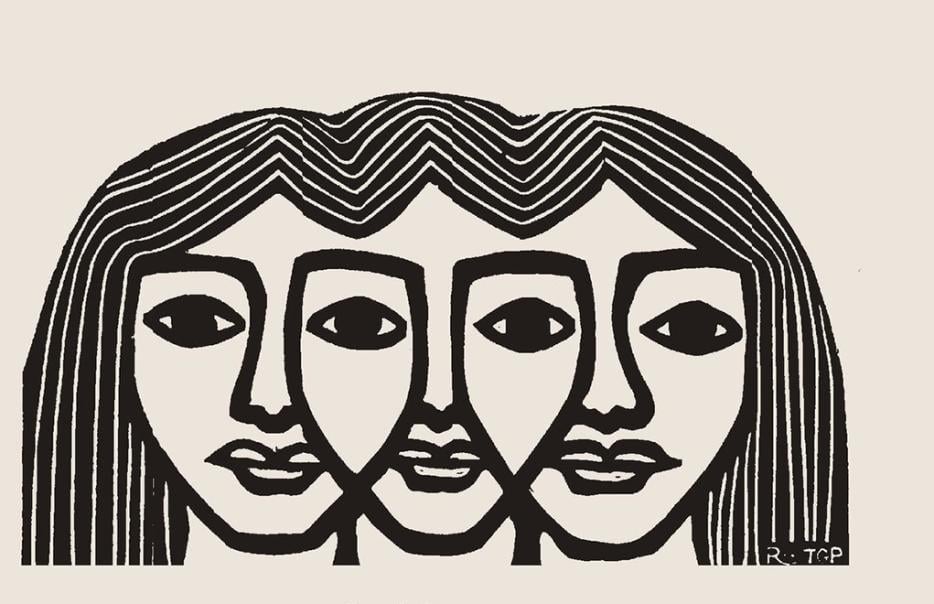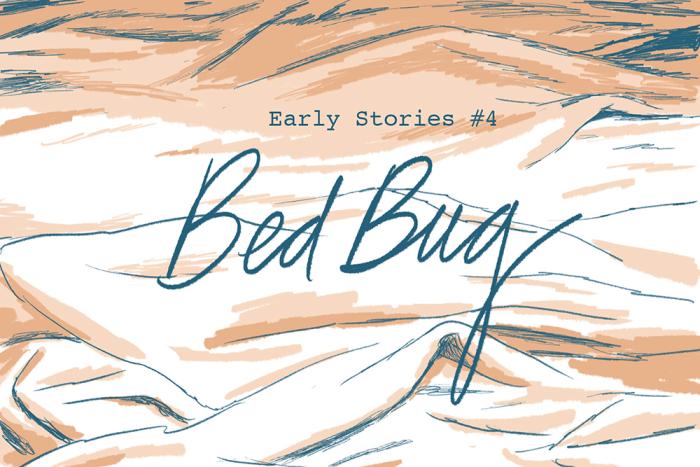For the last eight weeks, poet Christopher Soto (a.k.a. Loma) has been traveling the country with their chapbook, Sad Girl Poems, speaking to audiences about homelessness and mass incarceration on their Tour To End Queer Youth Homelessness. Sad Girl Poems was published by Sibling Rivalry Press in January and draws heavily from Soto’s childhood growing up with domestic violence in Long Beach, California, as well as years of housing instability that resulted from that violence, and which continue to make an impact on Soto’s life. Speaking with me in a café in Lefferts Gardens, Brooklyn, just before Sad Girl Poems’s release, Soto told me that the Tour To End Queer Youth Homelessness, for which they’re raising funds on GoFundMe, is both a celebration of the chapbook and a preemptive move to avoid losing their apartment.
Soto couch-surfed from April to August of last year after graduating with an MFA from NYU, funded by a scholarship. When I met with them, they were again facing housing instability, unable to find steady, full-time work. After years of sleeping in cars and at friend’s houses, and couch-surfing to escape violence at home, “The one thing I’ve learned is to try to always keep the roof over my head,” Soto said. The tour is also important, though, because the titles of “activist” and “poet” coincide for Soto. “The poets and activists are the feelers and thinkers, culture-makers, culture-shifters,” they said. “The role of the artist and the activist is to show what’s not seen.”
Sad Girl Poems opens with a foreword by the author. “I want people to act. I want people to mobilize around POC sadness,” Soto says. “I want you to give your money to the Ali Forney Center & financially support queer homeless youth. I want you to donate your money to Black & Pink to support queer folks in prisons.” The book’s ten poems contain devastating vignettes from Soto’s young adulthood, as if sadness itself is its mobilizing force. In “Those Sundays,” Soto says, “My father hated faggots. The way / my cock looked beneath a dress.” He was violent, and Soto found refuge with their first love, Rory, sleeping in Rory’s car on nights when they had to run away. “Those Sundays” mirrors this refuge-taking, twice beginning to tell a story of Soto’s father, then veering suddenly: “His hand was the hammer. I was / the nail. & I want to talk about Rory now.”
This dialectic in Sad Girl Poems—Soto’s father and Rory—pits love against violence. In “Crush a Pearl [Its Powder],” about Rory’s death, Soto recollects lying together with him on a beach: “We watched sky / Burn & fall [like terrible angels].” Soto’s heart is compared to a red cardinal, and their ribs its cage; Rory’s teeth are pearls. Even in grief, love is beautiful; even with violence surrounding, love is a refuge. The shock of Rory’s death reverberates through every other piece in Sad Girl Poems, and as readers, we feel compelled to step in and protect Soto—protect all victims of domestic violence, and all queer youth experiencing homelessness. In the following poem, “Myself When I’m Real,” Soto tells us how to do so: “Say my body // isn’t a sequin dress / Say I’m not // a drunken disco ball / In a lonely skating rink.” To love, we have to humanize—love is not objectifying. Love doesn’t refuse, or kick out on the streets.
In the Lefferts Gardens café, Soto told me they’ve learned to be conscious of the ways victims of domestic violence perpetuate that violence in other relationships. This fear of bringing it upon a partner or another intimate runs through Sad Girl Poems, as Soto longs for love but pushes it away. “Hatred of Happiness” reads, “Don’t you know that broken boys can’t make a proper home.”
I asked Soto about the line. In the poem, Soto is described as a house, with porch lights turned off and curtains drawn, and an unanswered doorbell. “I think those lines are written from that fear, of not wanting the metaphorical home to collapse on another individual,” Soto said. “I’ve learned how to be gentle by doing certain things such as waiting a couple of minutes before responding, or communicating in other forms that aren’t merely verbal, like writing letters.” They’ve learned a lot from radical organizing communities like the Audre Lorde Project, a community for queer and trans people of color in New York City. “They’ve taught me about accountability and open communication patterns,” Soto said. “I just try to emulate those patterns. And then I read.”
Some of the poems in Sad Girl Poems paint a broader picture critiquing late capitalism, such as “Home [Chaos Theory],” which opens with a contemplation of the word “home,” saying, “Here, it’s possible to [own] property / & feel completely homeless.” Soto witnesses a homeless woman being harassed by police in San Francisco, and reflects on the “extremely othering” ways in which homelessness is commonly discussed, “As if ‘homelessness’ were a singular portrait / [A singular experience],” including by close friends: “As if I had never been homeless. / [As if I were not sitting // directly beside them].” The poem is the longest in the book and again returns to Rory, to the night he crashed his car and Soto’s refuge was destroyed. Without anywhere to go, “I was too afraid to call other friends // or family members. … When the church was closed. / & the park was being patrolled. / & I got tired of just walking around. / & I would hum songs to myself...” They describe building a tent behind the fire station using old tarps and stolen plastic chairs, sweeping the dirt ground and laying out a sleeping bag over flattened cardboard boxes. “Yes. / [I have been that kind of ‘homeless’ before].” Soto makes searingly personal what is so often only gleaned through statistics, though statistics are important, too.
According to the Ali Forney Center, nearly forty percent of homeless youth in New York City identify as LGBTQ, and nationwide as many as 200,000 queer youth are experiencing homelessness. Homeless queer youth are at greater risk of sexual assault and other kinds of violence, HIV infection, mental health issues, and substance abuse. The Tour To End Queer Youth Homelessness’s GoFundMe helps Soto reach grassroots organizations that wouldn’t otherwise be able to pay for their lodging and transportation, such as Project Fierce in Chicago and Y2Y Harvard Square in Cambridge, both of which work directly with homeless queer youth. At the readings, Soto meets queer and trans people of color, poets, and scholars. People come up afterward and ask for advice, or tell them about their own histories with domestic violence and homelessness. Sharing stories, Soto is able to make meaningful connections with others doing activism.
Much of Soto’s tour focuses on the relationship of mass incarceration to queer youth homelessness. “Fighting in solidarity with homeless queer youth is fighting for the decriminalization of drug use and sex work, fighting against police brutality, fighting against mass incarceration, against homophobia and transphobia,” they said. In Soto’s writing and speaking, one of their main focuses is on histories of resistance such as that of groups such as Vanguard, the nation’s first queer youth organization. Most of Vanguard’s members were homeless, and it was one of the first queer groups to confront the issue of police violence. Part of Soto’s presentation of Vanguard’s history includes teaching poetry written by its members.
Soto came into poetry through hip-hop. Hip-hop turned into slam poetry, and slam poetry turned into the page. The page turned into an MFA at NYU. “Prior to that, I had sold all of my belongings, moved to the bottom of a three-story house with fifteen other individuals in San Francisco, backpacked the country, run out of money, and I was living in a tent in the middle of the woods in Tennessee,” they said. They’d dumpster-dive for food in Memphis; in the summertime, the mosquitos were insatiable. “I had no money and no options, so I was like, ‘Might as well go back to school and have school pay for my life for awhile.’”
The school’s invitation was a surprise. Soto knew nothing of the contemporary poetry community, literary journals, or writing workshop critiques at the time—and was suddenly thrust into an institution under the tutelage of some of America’s most renowned writers. Their first class was with Charles Simic and they hadn’t read his work. “I was like, ‘How the hell did I get here?” they said. “What am I doing?’”
A classmate was editing with Lambda Literary and put Soto in touch with the managing editor, William Johnson. In September 2014, they launched Nepantla: A Journal Dedicated to Queer Poets of Color, which Soto edits. “I had to create that journal,” they told me. According to a recent survey by Publishers Weekly, ninety-one percent of publishers are white. Only three percent are Latino. “I can probably guarantee that none of them are trans or gender nonconforming. How are you going to be able to find work in an industry where your body and your community doesn’t exist?”
As well as creating this intentional community at Nepantla, which makes space for voices marginalized by the mainstream, with The Undocupoets Project Soto sought to end citizenship-based discrimination in poetry publishing and first-book contests. Many first-book contests require proof of U.S. citizenship or permanent residence prior to a book’s publication. This “serves to exclude 11.7 million undocumented people from fully participating in publishing opportunities,” Soto said in an interview published by VIDA. As a queer poet of color, fighting for the rights of other queer poets of color is important: “I had to depend on community for a lot of my life and wellbeing,” they told me in the café. “And that’s also why I support, so arduously, my community.”
Since beginning the tour, Soto has begun working at the Stonewall Community Foundation, and is at work on a full-length poetry manuscript about police brutality, mass incarceration, civil disobedience, and other forms of protest. When I arrived at the café, they were writing on their computer, at work on a ghazal about two hundred Indian women who killed their rapist, Akku Yadav, on the courtroom floor in 2005. “He had gone on raping women with impunity in the area for over a decade,” Soto told me. “He had just been arrested and was about to, essentially, get off again, with his charges.” The women stormed him. Some were arrested and later released. Powerful voices spoke out in support of them, with one retired high court judge even congratulating the women.
As to why Soto chose the ghazal for this story, they explained, “I like the repetition at the end of the line. I also liked the lyricism of having to repeat back to the first line. The obsession over the line, the obsession over the image, over the act, the repetition of the voice, the recurrence of what happened.”
Soto takes notes on their iPhone and in margins of books and transcribes them weekly into the in-progress manuscript document on their computer. In the document, beneath the ghazal, unfinished poems frayed into clusters of random words. “I have no clue what form this is going to take right now,” they said, pointing to one cluster. Beyond that, there were even more fragments. Some were ideas for poems, some were lines that they might incorporate. Soto tends to read and write simultaneously. “I steal from a lot of poets and thinkers and authors in my text, I think because of that process,” they said. “I’m always flipping through different books and different materials or songs, looking for inspiration, or different frameworks.” As a gender nonconforming poet, most of the writers they see themselves in are radical women of color, like Angela Davis and transgender activist Silvia Rivera. At the moment, the epigraph for the new manuscript is by Rivera. It says, “We always thought that the police were the real enemy.”






